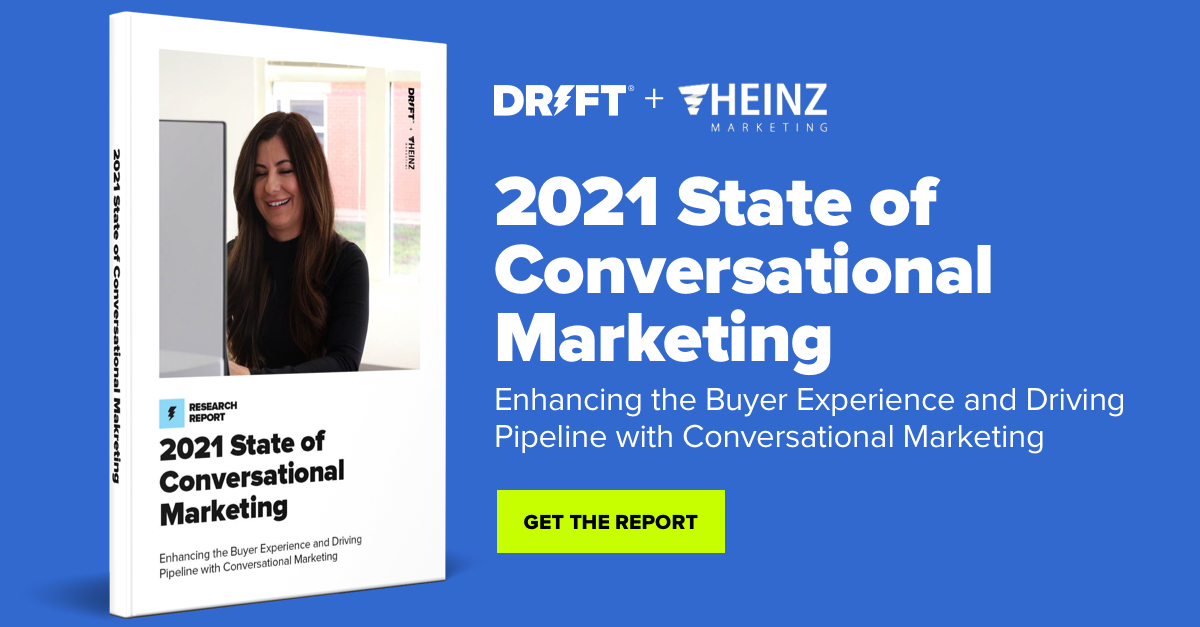People who work in B2B talk about eliminating friction…a lot (guilty). But, as it turns out, there’s still a lot of friction left in the B2B buying process.
In our 2021 State of Conversational Marketing report, we found that frustration with B2B digital experiences has risen since 2020. Buyers are increasingly frustrated with poor quality forms (27%), poor website navigation (25%), and difficulty getting answers to simple questions (20%).
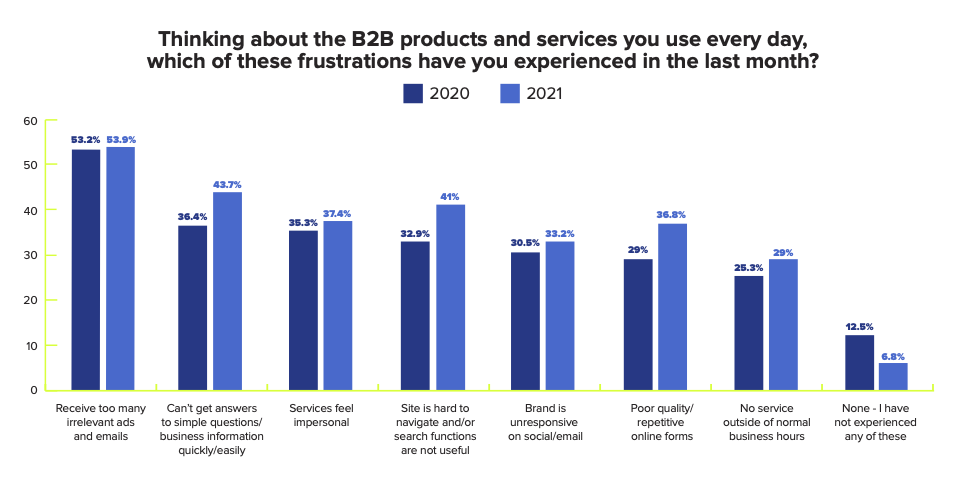
As B2B businesses fully shift into the digital space, more and more buyers demand both fast and authentic buying experiences. Buyers are no longer willing to stick around for days to hear back about a product or get a question answered.
And that’s only going to become more true over time. According to Gartner, by 2025, 80% of all B2B buying will happen across digital channels. That’s why B2B companies need to address these frustrations as soon as possible.
Conversational Marketing is B2B’s answer to the slow, complex buying processes of today’s world. It uses real-time conversations to guide buyers throughout the buyer’s journey while adding a personal touch.
Unfortunately, with hasty rollouts and fluctuating work environments, Conversational Marketing solutions also proved a source of frustration. Since 2020, positive user experiences with these solutions have dropped by 10%.
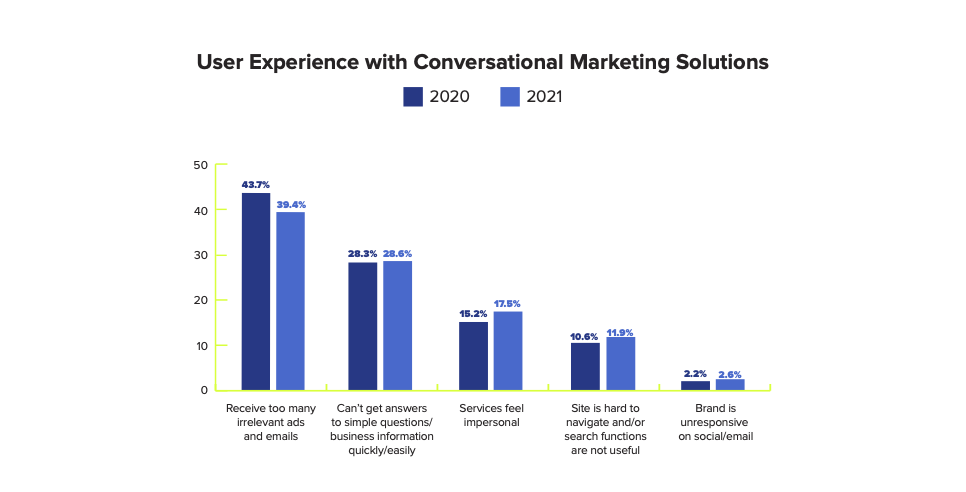
In 2022, marketing and sales teams must prioritize their digital experiences with an emphasis on ease of navigation and quick responses (within the first five seconds ⏱). Conversational Marketing is the best way forward — but how can you make the most of it? Here are five data-driven recommendations for improving your digital buying experience in the coming year.
1. Find Friction in Your Touchpoints
Before you dig into your Conversational Marketing experience, you first need to assess where you have friction in the buyer’s journey. Try out a few of these methods to pinpoint issues:
- User testing: Test every touchpoint by behaving as a buyer would. Check your live chat response times during business hours, chatbot sequences, and sales SLAs (service-level agreements).
- Tech stack assessment: Is your tech stack doing everything to remove all friction? Maybe you’re missing some key features, like lead qualification within forms, AI chatbots, or an enhanced VIP experience. Without the right technology, your buyers are going to encounter friction throughout their buying journey.
- Customer research: Go straight to the source. Hold phone calls and surveys to ask customers about their buying experience. For the best results, talk to the customers who’ve been on board for two to five months. They will have had enough time to see results from your product, but the buying experience will still be fresh in their minds.
- Employee feedback: Your best advisors are the people you work with every day. Employees can provide insight into buying processes from former jobs or times when they were the buyer. Check in with both sales and marketing to hear what they have to say about current friction in your touchpoints.
- Funnel analysis: Are certain parts of your funnel routinely underperforming? These might be opportunities for new wins. For example, your target audience may have changed slightly or you may be missing a dedicated chatbot for one of your high-intent pages. While you’re at it, take a long hard look at your funnel and make sure that it’s geared towards the new era of marketing and sales.
2. Automate Touchpoints Wherever Possible
What’s faster than automatic? Nothing 😎
Keeping up with buyer demands without increasing your headcount is hard. That’s why you need to automate.
With automation, you give buyers the power to engage with you on their own terms without tying up any of your sales reps. Here are some conversations you might want to automate:
- Answers to FAQs: Create automated answers to frequently asked questions, such as security protocols, integrations, service fulfillment processes, etc.
- Content delivery: Instead of gating content behind forms, offer access to content via chat. This way, you’ll be able to engage with site visitors while familiarizing them with your chatbot.
- Interest signals: Use chat to capitalize on signals of high intent. For example, you could send an automated greeting to a repeat visitor such as, “I’ve noticed you here before! How are you currently managing media buying?” Essentially, you want to use these signals to spark a conversation and begin to better understand your buyer.
- Re-engagement: Automated conversations can also help re-engage buyers who haven’t been on your site in a while. You might greet them with something like, “Welcome back! A lot of cool stuff has happened since we saw you last. Check out our latest report.” For infrequent site visitors, you’ll be better off serving up helpful content rather than diving into a sales conversation.
In addition, AI Conversational Marketing solutions can free up your sales reps’ time while maintaining the same level of personalization. 56% of AI Conversational Marketing users experienced increased sales productivity.
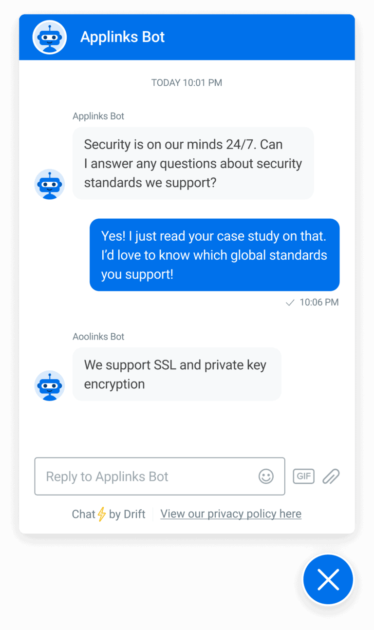
According to 49% of respondents, one of the biggest benefits of AI is the ability to qualify buyers in real time. With AI chatbots, you can respond to your buyers’ queries while also encouraging them to take the next step along their buying journey, whether that’s reading a relevant case study, providing an email address for follow-ups, or even requesting a demo — all automatically.
3. Personalize the Digital Experience for Buyers
Buyers have more control than ever before. Rather than being sold to (with cold calls and bulky mail), B2B buyers are actively researching and vetting multiple companies before reaching out to sales.
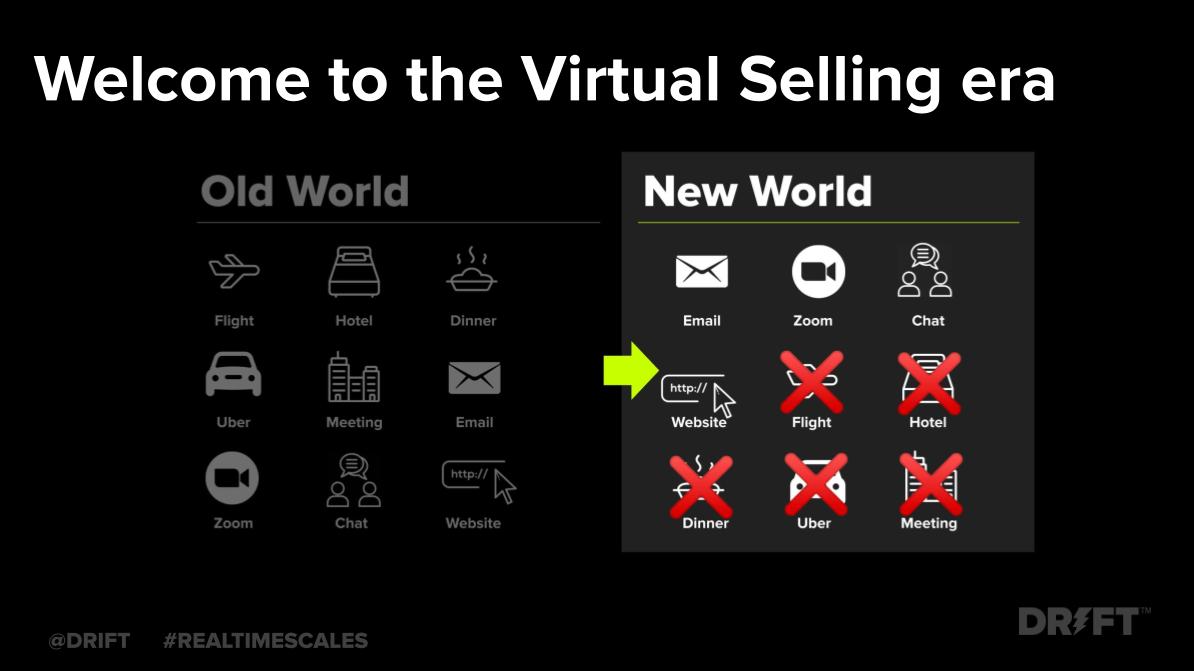
Buyers value fast, personalized responses above all. Businesses that used Conversational Marketing reported greater benefits across their website performance (58%), paid media performance (46%), and sales enablement (39%).
So, instead of sticking to the old way of selling, move into the digital space and look for new ways to personalize your website experience. With chatbots, for example, make sure you have customized hooks for your web pages so that you’re engaging your buyers with a relevant (rather than generic) greeting.
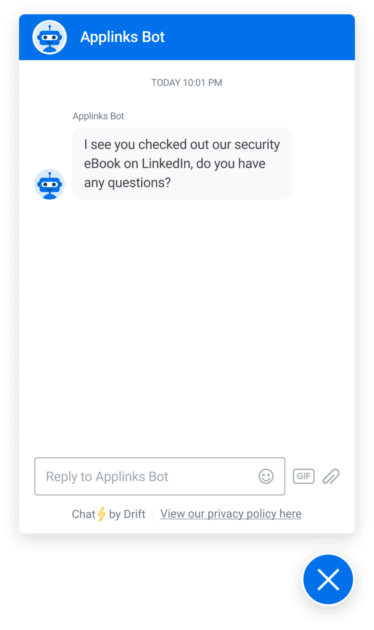
To take things a step further, draw from the data in your marketing tech stack to call the visitor by name or incorporate their specific interests into the conversation based on their browsing behavior.
4. Align Sales and Marketing with Your Conversational Marketing Solution
For 40% of our respondents, lack of sales engagement impacted the effectiveness of their Conversational Marketing solution. While automation can fill in the gaps, the success of your solution ultimately depends on the alignment between your sales and marketing teams.
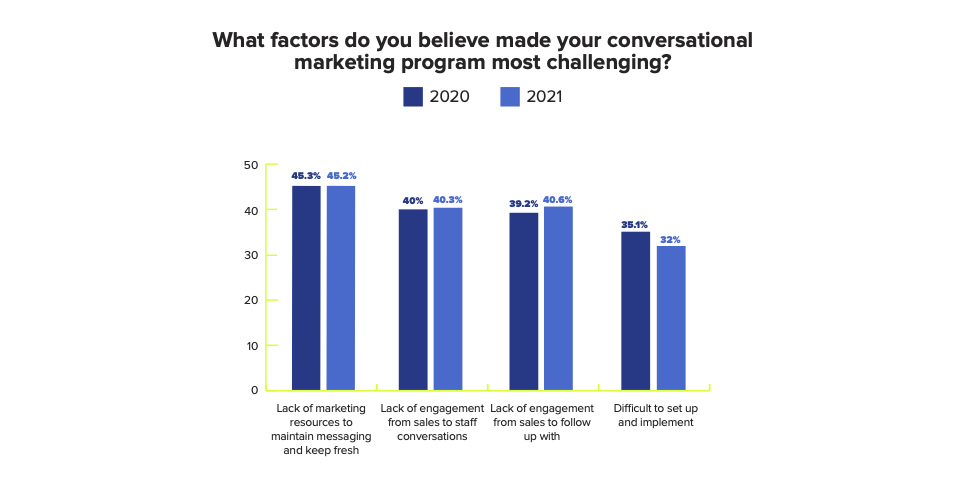
To encourage alignment between your teams, your marketing and sales teams need to be communicating at every point of the buyer’s journey. Make sure that they agree on your ideal customer profile (ICP) and your list of target accounts. Then, you’ll want all hands on deck when you’re building out your playbooks.
By aligning your teams through your Conversational Marketing solution, you can automate the lead qualification process and give time back to your sales reps. With real-time notifications, you can also rest assured that your sales reps are jumping in to chat with your most important buyers. And, in no time, you’ll see your team become a revenue-generating machine.
5. Integrate Conversational Marketing into Your Campaigns
Think of Conversational Marketing as a tool to level up all your interactions with your buyers. Whether your buyer starts with an ad, a piece of content, or an event registration form, you want to give them the chance to engage with you in a genuine conversation.
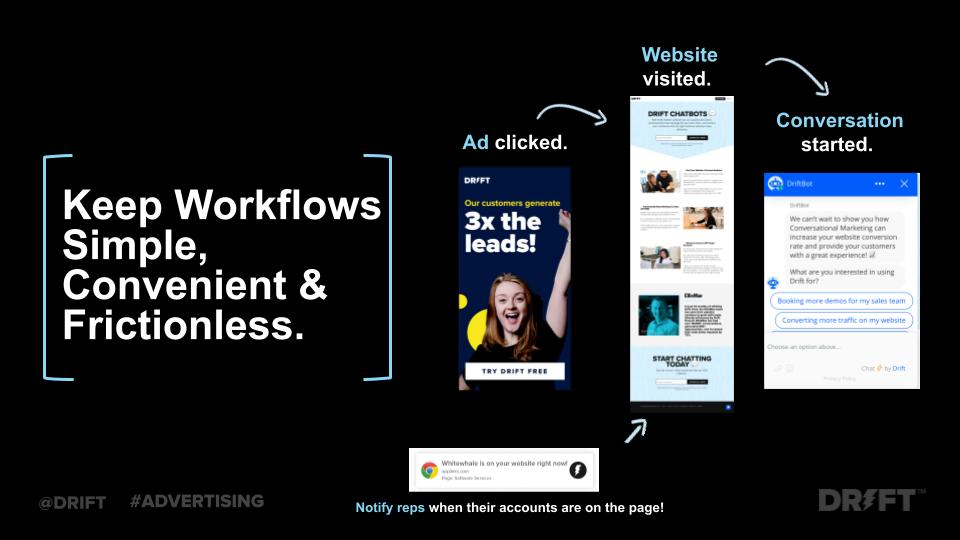
One way you can align your digital experience is by integrating Conversational Marketing with your paid media campaigns. Lessonly does this by connecting their ads to a page with a customized chatbot that acknowledges that the buyer came from an ad. This way, the chatbot can dive into the buyer’s needs straightaway and suggest the next best course of action.
By placing Conversational Marketing at the heart of your digital experience, you’ll see an increase in buyer engagement: 49% of respondents reported increased website engagement and 41% saw increased ROI on digital ads, paid social ads, PPC, and retargeting.
Final Thought
Conversational Marketing isn’t just about live chat anymore. It’s about providing fast and easy buying experiences across your digital channels. With continuing developments in Conversational Marketing, sales reps and marketers are better equipped to engage with prospective buyers on their terms.
So, what are you waiting for? Take our recommendations and get ready to embrace the digital era of B2B buying in 2022.





